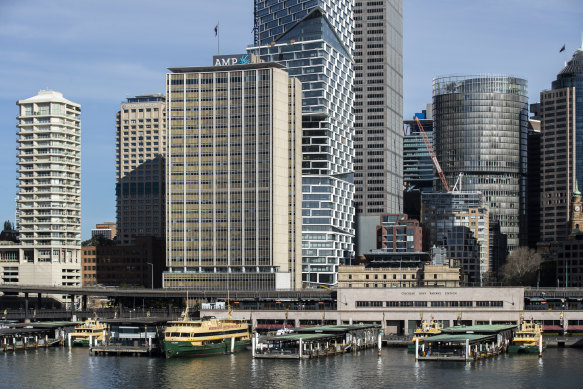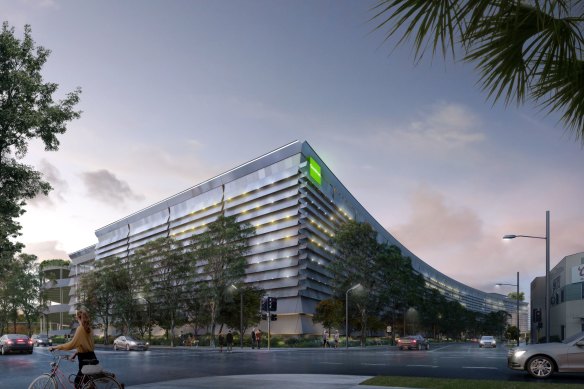Industrial and office markets will be the key to reporting season
Industrial property owners will likely be the standout performers in the reporting season which kicks off in earnest next week for the Australian real estate investment trust sector.
The outlook for office markets and any rebound in retail sales will also be put under the microscope by analysts and investors.
UBS’s analyst team said in its note on the season that it has increased its exposure to the booming industrial market which is operating at near zero vacancy rates in the key Sydney and Melbourne markets with demand continuing to rise at a rapid pace.

“We increase our exposure to logistics with buy ratings on Goodman and Centuria Industrial REIT, together through GPT and Stockland’s diversified portfolios,” UBS says in a research note.
‘Going forward the prospect of rising interest rates, a tight employment market and thoughts of a global and or a domestic recession will have great interest and determine where the A-REIT sector goes from here.’
Sequoia Asset Management’s Winston Sammut
“We maintain a favourable view on diversified/ residential developers. We have moderated our view on retail relative to 2022 as we head into a more difficult retail sales growth environment after a strong period of outperformance.”
UBS analysts said they will continue to take a cautious stance on office markets, but said that increasingly this is reflected in share prices.
Mirvac, the Centuria stable and Region, formerly SCA Properties, were the first majors to report last week with a mixed outlook. Mirvac confirmed it will focus on the industrial sector and will defer some new office developements, while the Centuria funds will look at alternative markets such as healthcare and its traditional suburban offices and warehouses.
Sequoia Asset Management’s Winston Sammut said the market is expecting earnings for the half not to disappoint, but investors will likely place more emphasis on the outlook comments particularly as they relate to the impact of rising interest rates on their operations.
“The December 2022 numbers will have been positively impacted by an economy that was opening, as the impact of COVID-19 lockdowns diminished,” Sammut said.
“Going forward the prospect of rising interest rates, a tight employment market and thoughts of a global and or a domestic recession will have great interest and determine where the A-REIT sector goes from here.”

For Fitzroys director Paul Burns, the outlook is also for strong demand for warehouses, but adds that the CBD and suburban office markets are a “sleeper”.
“Industrial remains a highly sought asset class, having experienced an unprecedented boom during COVID on the back of e-commerce and online shopping, and will remain keenly sought,” Burns said.
“Ongoing rental growth is offsetting softening yield and so capital values are holding firm.”
Industrial giant Goodman has said it is near zero vacancy and is also looking at vertical warehouses where space is tight.
Burns said the return of office rental growth, particular for prime CBD assets, is supporting values. All office markets have been affected by higher interest rates, but Burns maintains “the office will come back into its own with the passage of time”.
“Following three COVID-interrupted years that saw businesses re-evaluate their real estate requirements, many leaned towards more office space per person, and increasingly are showing a preference for suburban locations which are close to workers’ homes,” Burn said.
Valuations of assets is also under the spotlight and Morningstar equity analyst Alex Prineas warns that conditions are likely to worsen for commercial property in 2023, as higher interest rates depress property valuations, and make tenants cautious.
“While some heavily indebted names are undervalued, the A-REIT sector has fallen substantially in the last year, opening up comparable or better value among higher-quality names with stronger balance sheets,” Prineas said.
“Some property plays are prepared for higher rates, mitigating downside risks, and have meaningful stock price upside such as Dexus, GPT Group, Lendlease and Mirvac.”
He said over indebted A-REITs have plans to reduce debt by selling non-core assets. Even so, most A-REITs have one-third or more of their debt on floating rate arrangements, which means debt costs will increase as rates rise.
These asset sales will be scrutinised, but it’s a hard task with deal flows diminishing in the past six months as cash is tight from overseas buyers.
CBRE’s head of capital market research Tom Broderick said that while transaction activity in the first half of 2022 was in line with previous years’ averages, there has been clear evidence of a slowdown in the second half.
“In a higher interest rate environment, the market has returned to a price discovery phase, which has caused deal activity to drop,” Broderick said.
He said in the year to date, $35.9 billion in office, industrial, retail and hotel assets have changed hands, down 29 per cent on last year’s $50.5 billion sales tally.
The office sector took the top spot, with $15.2 billion worth of towers traded, more than double the tallies in the industrial and logistics and retail sectors at $7.3 billion and $7 billion respectively.
The only rise in volumes was recorded in the hotel sector, with Blackstone’s purchase of Crown Resorts pushing total hotel sales to $6.4 billion.
Most Viewed in Business
Source: Thanks smh.com